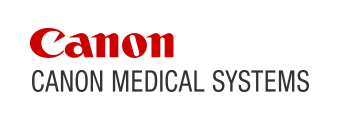
Early detection can save more lives
"Screen for Life. Breathe with Hope." is Canon’s global initiative that aims to promote awareness of lung cancer, improve access to and encourage lung cancer screening, which can aid in early detection, and ultimately contribute to the reduction of cancer mortality.2



Stories of inspiration
Cookies: We are sorry we can’t show you this video – as matter of your Cookies preferences. Accept here the Targeting Cookies to watch the video content.
Cookies: We are sorry we can’t show you this video – as matter of your Cookies preferences. Accept here the Targeting Cookies to watch the video content.


Current challenges
As part of our Made for Life philosophy, Canon Medical is committed to providing support to address these challenges.
Challenge 1: Low participation rate
Many individuals at high risk for lung cancer are often unaware of the potential benefits of screening or may face barriers such as cost, accessibility, or fear of the screening process.
Challenge 2: Workload and workflow
Workflow issues, such as managing the influx of screening participants and ensuring timely communication of results, can be a significant burden. Moreover, the repetitive nature of interpreting numerous lung scans can be mentally draining and lead to a loss of enthusiasm.
Challenge 3: Maintain clinical confidence at low dose
Screening participants are typically exposed to repeated CT scans which raises concerns around radiation dose. Lung cancer screening when performed without efficient CT hardware and image reconstruction algorithms, may yield inconclusive or false positive results, leading to additional and costly follow-up procedures, while causing anxiety and stress for patients.
Challenge 4: Cost-effectiveness
Cost-effectiveness of the program requires a careful balance of the investments in equipment and staff, training, and the number of diagnostic and downstream follow-up procedures versus the benefits of improved health outcomes and less spending on costly therapies in the long-run.
Latest insights on addressing challenges
Lung Cancer Screening (LCS) saves lives, but more people need to get screened.
Get the big picture on challenges faced in screening and practical solutions in just one glance.
Through our "Screen for Life. Breathe with Hope." initiative, Canon Medical aims to change societal perceptions of lung cancer and encourage participation in early screening, which could ultimately contribute to the reduction of cancer mortality.2
Subscribe to get notified on our upcoming lung cancer screening webinar in September: Building a Strong LCS Program with AI-Driven Efficiency.
Subscribe now






